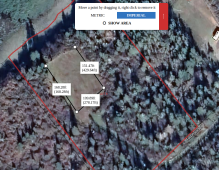JayArr
Owner - JRElectronics
We've purchased our retirement land and are going to build a house in the country then sell the house in the city.
We've got problems with getting the grid to our lot since easements are required from every property along the route and some of the owners are incommunicado and others want large cash payments in order to sign. I'm trying to compare apples to apples by extrapolating each scenario out by 15 years and measure the total cost of power.
I'll have a huge south facing sloped roof for panels so I thought I'd look into off-grid. I'm familiar with inverters and charge controllers from my RV but have no experience in the whole house hardware.
I use a LOT of power so I'm curious as to whether I can make this work. I'm currently using 70-80 kWh per day because both my wife and I work from home and I run an electronics repair shop from here. On the weekend I either work on cars, do some welding or build something in the wood shop.
I'm thinking I need a big genny to run on the weekends when I'm using high power machines like welders, compressors and saws. I'll need a small solar system to keep the lights on and the internet running in the utility building and then there is the house. It'll be small, about 1500sqft and the stove, water heater and dryer will all run on LPG. Heating will be by LPG in floor radiant heat with a wood stove in the living room. I hope the same genny can serve as backup and or battery charge when sunlight is not enough.
For a first step I've ordered a power analyzer to go on my breaker panel and monitor and record what each branch uses, when it uses it and for how long. I've really got to get a grip on where I'm using so much power. I'm thinking I need to somehow cut it in half at the new place. 35kWh per day? We'll be retired so that should help.
I'll be in and out of there asking questions about how to do things and such, I hope I've picked a friendly forum to join.
JayArr
We've got problems with getting the grid to our lot since easements are required from every property along the route and some of the owners are incommunicado and others want large cash payments in order to sign. I'm trying to compare apples to apples by extrapolating each scenario out by 15 years and measure the total cost of power.
I'll have a huge south facing sloped roof for panels so I thought I'd look into off-grid. I'm familiar with inverters and charge controllers from my RV but have no experience in the whole house hardware.
I use a LOT of power so I'm curious as to whether I can make this work. I'm currently using 70-80 kWh per day because both my wife and I work from home and I run an electronics repair shop from here. On the weekend I either work on cars, do some welding or build something in the wood shop.
I'm thinking I need a big genny to run on the weekends when I'm using high power machines like welders, compressors and saws. I'll need a small solar system to keep the lights on and the internet running in the utility building and then there is the house. It'll be small, about 1500sqft and the stove, water heater and dryer will all run on LPG. Heating will be by LPG in floor radiant heat with a wood stove in the living room. I hope the same genny can serve as backup and or battery charge when sunlight is not enough.
For a first step I've ordered a power analyzer to go on my breaker panel and monitor and record what each branch uses, when it uses it and for how long. I've really got to get a grip on where I'm using so much power. I'm thinking I need to somehow cut it in half at the new place. 35kWh per day? We'll be retired so that should help.
I'll be in and out of there asking questions about how to do things and such, I hope I've picked a friendly forum to join.
JayArr



